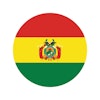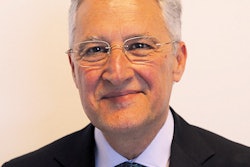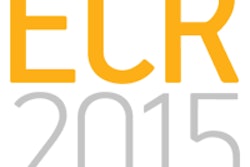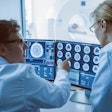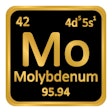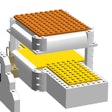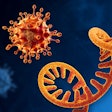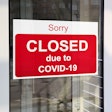
One silver lining to the economic crisis in Spain is that it's causing radiologists there to look for innovative ways to do more with less. Clinical decision support can help accomplish that, and a Spanish hospital is working with the European Society of Radiology (ESR) to test software that could find its way into widespread use around Europe.
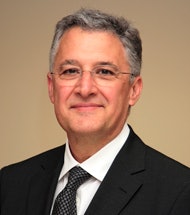 If the ACR Select clinical decision-support software can work in Spain, it can work anywhere, Dr. Lluis Donoso Bach, PhD, said.
If the ACR Select clinical decision-support software can work in Spain, it can work anywhere, Dr. Lluis Donoso Bach, PhD, said.
For the past seven months, Hospital Clinic of Barcelona at the University of Barcelona has been testing the ACR Select clinical decision-support software, which the ESR is looking at adapting for the European market under collaboration with the American College of Radiology (ACR).
The project could help Europe roll out decision support without having to go through the exhaustive process of creating its own criteria for appropriate imaging, as ACR has done with its Appropriateness Criteria, according to lead researcher on the project Dr. Lluis Donoso Bach, PhD, director of the diagnostic imaging center at Hospital Clinic of Barcelona.
"It makes no sense to reinvent every criteria because the ACR has done this," Donoso Bach said in an interview at the recent ECR 2014 meeting in Vienna.
Reducing low-yield exams
ACR Select was developed in collaboration between the ACR and U.S. software developer National Decision Support Company. ACR Select first debuted at the RSNA 2012 meeting, and is designed to reduce inappropriate utilization by steering referring physicians away from requesting low-yield imaging exams that are most likely to be negative.
Physicians can use ACR Select through their existing computerized physician order entry (CPOE) application; the ACR Select interface pops up whenever they want to request an imaging exam. Referring physicians then input information on the clinical condition of their patient and the imaging exam they wish to request; ACR Select gives them an appropriateness score and color coding (green, yellow, or red) that tells them if the study is clinically indicated based on the ACR's Appropriateness Criteria. It can suggest alternative exams if necessary or no exam at all.
','dvPres', 'clsTopBtn', 'true' );" >

Click image to enlarge.
The clinical decision-support software in use at Hospital Clinic grades requests for imaging exams based on their appropriateness. Image courtesy of Dr. Lluis Donoso Bach, PhD.
ACR Select was developed for the needs of the U.S. market, where inappropriate utilization is a major driver of the nation's astronomical healthcare costs. But it's also proving useful in Spain, which has its own economic situation to deal with, as the ongoing economic crisis has driven the country to make budget cuts that have taken a bite out of healthcare spending, according to Donoso Bach.
"We are being asked to do better with less," he said.
The hospital has been testing a "Eurosized" version of ACR Select that's been translated into Spanish and adapted to the unique needs of the country. In addition to translating different clinical situations, diagnostic codes were transferred as well. Donoso Bach said the work was "not all that difficult," with consulting firm PricewaterhouseCoopers providing assistance.
Next, the software was tested by rolling it out to general practitioner (GP) physicians in Hospital Clinic Barcelona's network, in which 80 GPs serve a population of about 400,000. GPs are a particularly good physician population in which to test clinical decision support because most GPs in a particular healthcare system typically belong to the same institution, Donoso Bach said.
How did the software perform? Donoso Bach admits that he was skeptical of clinical decision support at first, but once in operation it won him over. GPs have embraced the system, and they now welcome feedback on how well their requests for imaging exams match appropriateness criteria.
With a successful pilot project now under their belts, Donoso Bach and colleagues are looking at making the software available to other types of referring doctors, with emergency physicians most likely next on the list.
European rollout
The pilot project has worked well enough that Donoso Bach believes the software should be rolled out throughout Europe, and indeed the ESR has a project underway to do just that. Called iGuide, the ESR's version of clinical decision support is also based on the National Decision Support Company's user interface and the ACR's Appropriateness Criteria.
As described in a poster in the EuroSafe Imaging area of ECR 2014, ESR first tried to develop clinical decision support based on guidelines created by the U.K. and French radiological societies. But initial work found "considerable discrepancies" between the two sets of rules, so the ESR signed an agreement with ACR to adapt its Appropriateness Criteria into iGuide as an interim product that can be brought to market quickly.
ESR sees a variety of benefits to clinical decision support: In addition to reducing inappropriate utilization, it could also lead to lower radiation exposure to patients through fewer unnecessary imaging tests. The Barcelona project thus could be the harbinger of a wider rollout of clinical decision support throughout Europe.
"If it works here, then it could be exported to other regional systems," Donoso Bach said. "Lots of people are looking at us."


